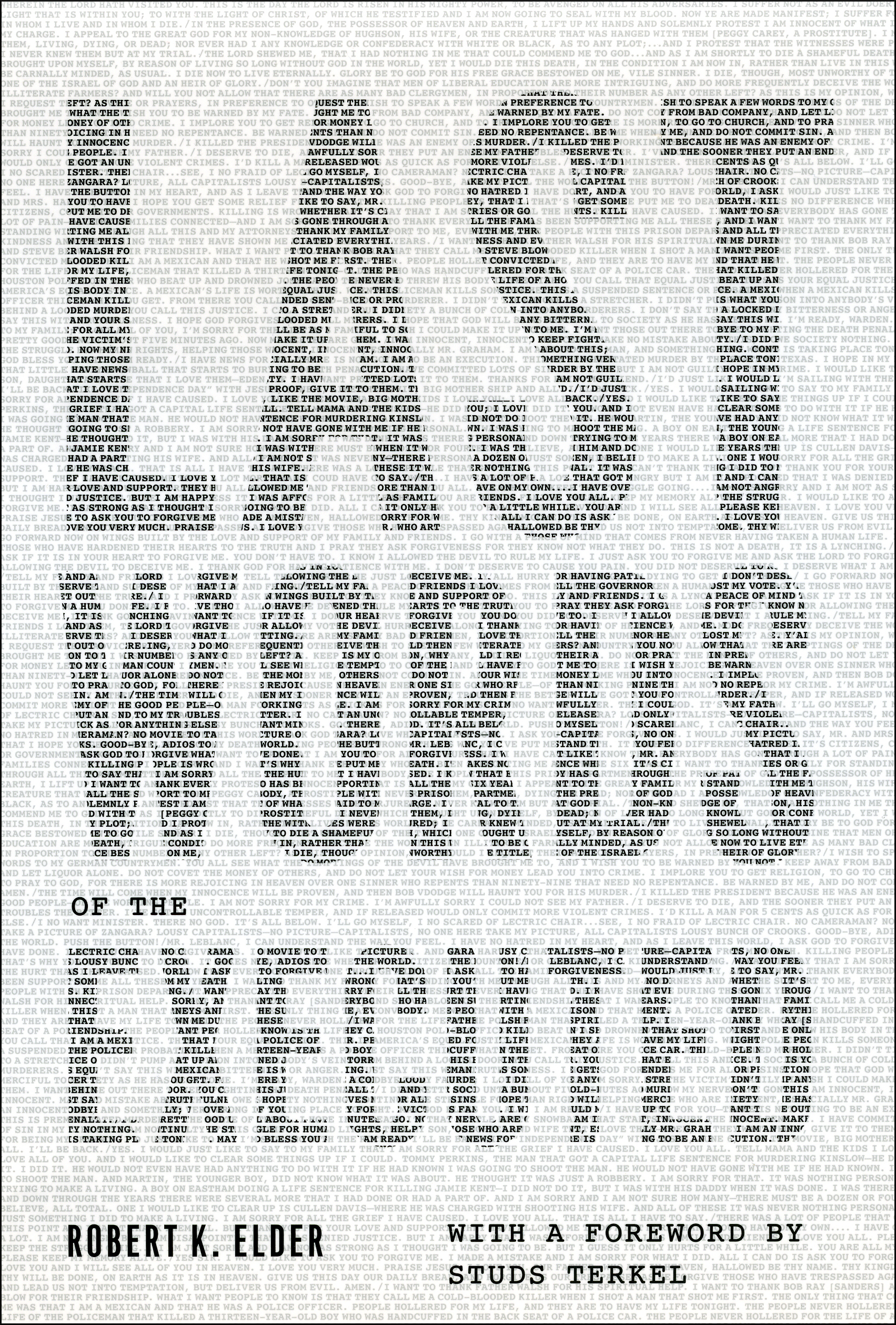Top Five or Ten: Bernie Sanders for book club president!

Three-day weekend: fin! We’re back with a vengeance today: and by vengeance, we mean filled with admiration and applause for Robert K. Elder’s piece on the approaching 150th anniversary of the largest mass execution in US history, which appeared in this morning’s New York Times. Elder, author of Last Words of the Executed (a sample of excerpts here), profiles the fate of the thirty-eight doomed Dakota Indians executed that day, including one story of mistaken identity, and updates us with the possible case for federal pardon. Spot-on narrative coverage of a historical issue with lingering repercussions for our own heated debate on capital punishment, we say. Congrats, again, Mr. Elder.
In other news, we’ve been poring over the 124-page transcript from Senator Bernie Sanders’s filibuster this past Friday. Galleycat already ran with a well-researched piece on all of the references Sanders made to books in his eight-and-a-half-hour-long speech (plus excerpts!) filibustering the tax deal shaped by Congressional Republicans and President Obama. With that post as inspiration, we thought to Top Five or Ten this, in tribute to Senator Sanders’s verbal endurance and in spirited promotion of books we think he might squeeze in as holiday reading before the next round:
Top Five or Ten: Books we’ll be sending to Senator Sanders in the hopes he’ll find time to read them before the next contentious bipartisan debate requires a prolific speech act
Robert A. Kaster and Martha C. Nussbaum’s translations of Seneca in Anger, Mercy, Revenge
Seneca (4 BCE-65 CE) was a Roman Stoic philosopher, dramatist, and statesman, all during the Silver Age of Latin literature. In Anger, Mercy, Revenge, Kaster and Nussbaum deftly translate three key writings, two of which were penned as advice for the young emperor, Nero. The third? The Apocolocyntosis, an artful satire lampooning the end of the reign of Claudius. Who better to champion an eight-hour speech than a Stoic, we ask? Read an excerpt here.
**
George William Van Cleve’s A Slaveholders’ Union: Slavery, Politics, and the Constitution in the Early American Republic
Van Cleve convincingly shows that the Constitutional provisions protecting slavery were much more than another mere “political” compromise—they were integral to the principles of the new nation. By the late 1780s, a majority of Americans wanted to create a strong federal republic that would be capable of expanding into a continental empire and in order for America to become an empire on such a scale, Van Cleve argues, the Southern states had to be willing partners in the endeavor. The cost of their allegiance? The deliberate long-term protection of slavery by America’s leaders through the nation’s early expansion. MacArthur Fellow and National Book Award-winner Annette Gordon-Reed calls the book “a dazzling addition to scholarship.”
**
Jane L. Collins and Victoria Mayer’s Both Hands Tied: Welfare Reform and the Race to the Bottom of the Low-Wage Labor Market
An in-depth study of the working poor in the midwestern United States, Both Hands Tied tackles the plight of working women in light of a gendered change in the labor market, welfare reform, and profound shifts in the responsibilities of family, firms, and the state. Sanders might first read Carl Chancellor’s insightful post about the book on Change.org’s Poverty in America blog here.
**
Marjorie Perloff’s Radical Artifice: Writing Poetry in the Age of Media
Perloff’s negotiation between poetic and media discourses has much to offer a would-be filibusterer. The natural speech of Phil Donahue versus the natural speech of modernism? Check. Written under “the sign” of John Cage, the artist behind one of our best-known acts of silence? Check. We really should make this a two-in-one and include Perloff’s Unoriginal Genius: Poetry by Other Means in the New Century, which brilliantly posits how citation became a form of literary discourse.
**
Gregory Koger’s Filibustering: A Political History of Obstruction in the House and Senate
We end with our most obvious candidate—the go-to history for how and why obstruction has been institutionalized by the US Senate over the past fifty years, and how its transformation continues to affect politics and policymaking. Hailed by everyone from the New York Review of Books to the Washington Post, Filibustering is great tactical reading for Sanders and its smart red cover makes it an apt object to wave on the Senate floor.
**
Right, Mr. Smith?




